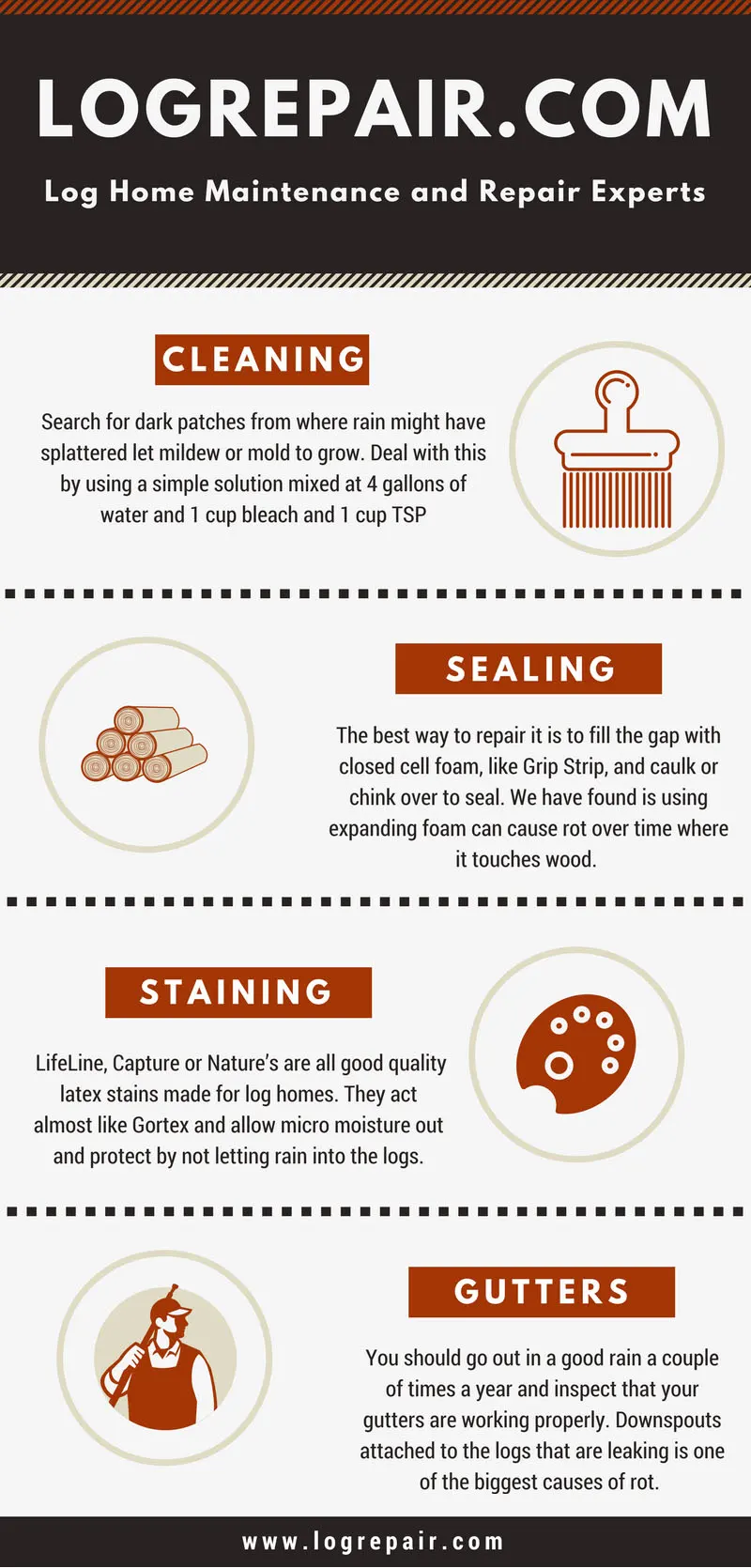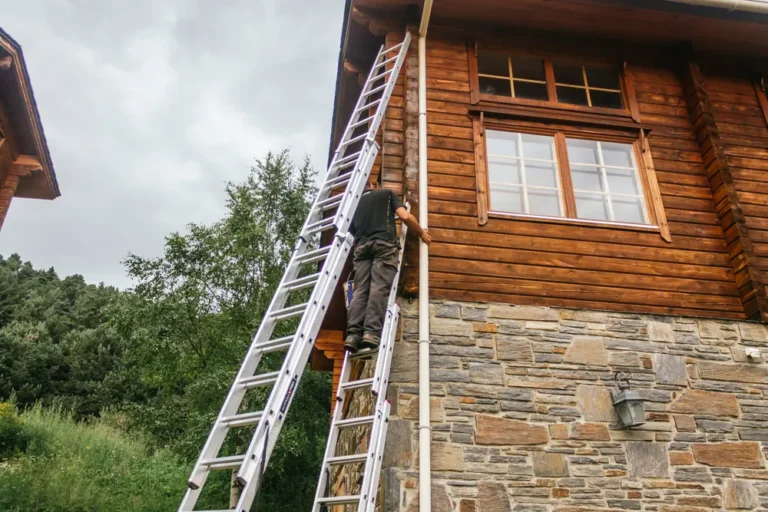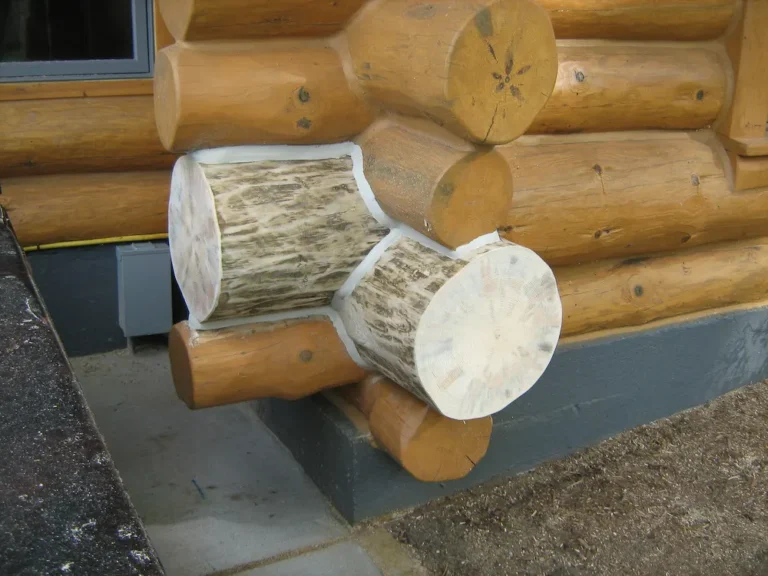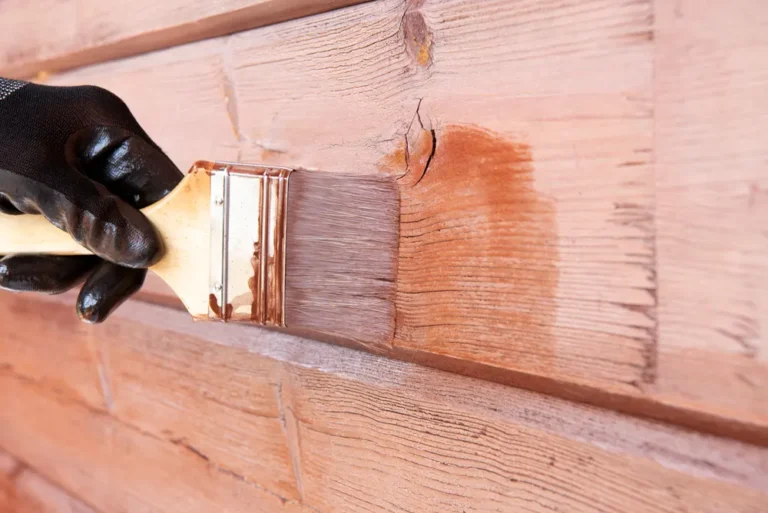Services
Comprehensive Log Home & Cabin Maintenance Services
American Log Restoration uses methods, tools and products that were used by craftsmen years ago. You can also be assured that you will be advised where and when modern methods and products would be most advantageous.
Log cleaning and resealing can be included in our maintenance agreements. These might include on-going visit inspections or annual treatments. Contact us for pricing by clicking here.
American Log Restoration is licensed, insured and warranted.
Log Cabin Maintenance Tips
Maintaining a log cabin requires a little more due diligence than a stick-framed house. It is a good idea to walk slowly around your cabin’s exterior a few times a year, such as in the fall and spring, to assess your dwelling’s condition. Look critically and carefully at areas where there might be an issue with water, like on end logs of the log cabin, chimney flashing, roof junctions, dormer connections, along with decks where logs meet, windows and doors.
It is best to perform maintenance on a regular basis, so make sure to mark your calendar.

Cleaning
This is part of every type of repair and maintenance routine, and log homes are no different. You should always go around the house and brush the cobwebs from the house first to avoid getting them wet, or they will be tough to remove from the logs.
Search for dark patches from where rain might have splattered let mildew or mold to grow. Deal with this by using a simple solution mixed at 4 gallons of water and 1 cup bleach and 1 cup TSP. Use a soft brush that has been wetted with the solution and gently scrub the area, then rinse it off with a hose and allow to dry for a few days before you re-stain. Never use straight bleach or 50-50 mixes. Too much bleach can break down the finish or make it impossible for a new stain to get a good chemical bond with the wood fiber on bare wood, thus eliminating the level of protection desired.
Ideally, the house should be given a light washing once a year (every three years minimum). Mix a solution of Log Wash purchased from Perma Chink per the label. Apply with a low pressure pump up garden sprayer or the low-pressure siphon nozzle with a power washer. Scrub the home with a soft brush and rinse with a high-pressure nozzle on the power washer. Stay back about 10 feet and just mist to rinse. Take care and DO NOT get too close so as not to damage the finish on the logs or drive water into them. By keeping the dust and pollen from settling on the tops of the logs will help prevent the finish from breaking down.
Sealing
Sealing should be part of your homes yearly maintenance and repair. For larger gaps, like the ones around the door bucks and windows, the best way to repair it is to fill the gap with closed cell foam, like Grip Strip, and caulk or chink over to seal. We have found is using expanding foam can cause rot over time where it touches wood. When you can feel cold air coming in around the windows and doors, fill in the triangle area with the Grip Strip and caulk/chink out flush with the trim board.
Staining
Prepare a spray bottle with water then to check your stain’s condition, spray some water onto the logs. The stain is doing its job still if the water beads up and then runs down.
To renew your cabin’s log stain, you will need to wash the homes exterior per the instructions above.
We have discovered that plant oil based stains (linseed, sunflower, safflower, etc.) don’t appear to stand up to harsh weather conditions and direct sunlight or last as long as petroleum oil-based stains. Some of these stains never dry out properly and are sticky allowing dust and pollen to stick to them causing black mildew to start growing on your home. Some of these stains require maintenance every year.
Another downside to oil-based stains is that they do not allow the logs to breathe. Oil based stains can trap moisture under the stain and in some cases will start surface rot, requiring restoration or replacement.
We prefer the water based latex stains made for log homes. LifeLine, Capture or Nature’s are all good quality latex stains made for log homes. They act almost like Gortex and allow micro moisture out and protect by not letting rain into the logs.
Every semi-transparent log home stain will require maintenance 3 to 5 years, oil or latex. The solid stains will need attention every 7-10 years, depending on your climate and exposure.
Gutters
To avoid needing to make an expensive repair or restoration it is paramount with any house to control rain runoff and water flow. However, for log cabin maintenance it is of particular importance since logs can become damaged (rot) and darkened if they are exposed to too much water.
You should go out in a good rain a couple of times a year and inspect that your gutters are working properly. Downspouts attached to the logs that are leaking is one of the biggest causes of rot.
Dirty gutters that are not working properly will cause more damage than no gutters at all. This leads to costly home repairs, and can cause extensive timber damage.





